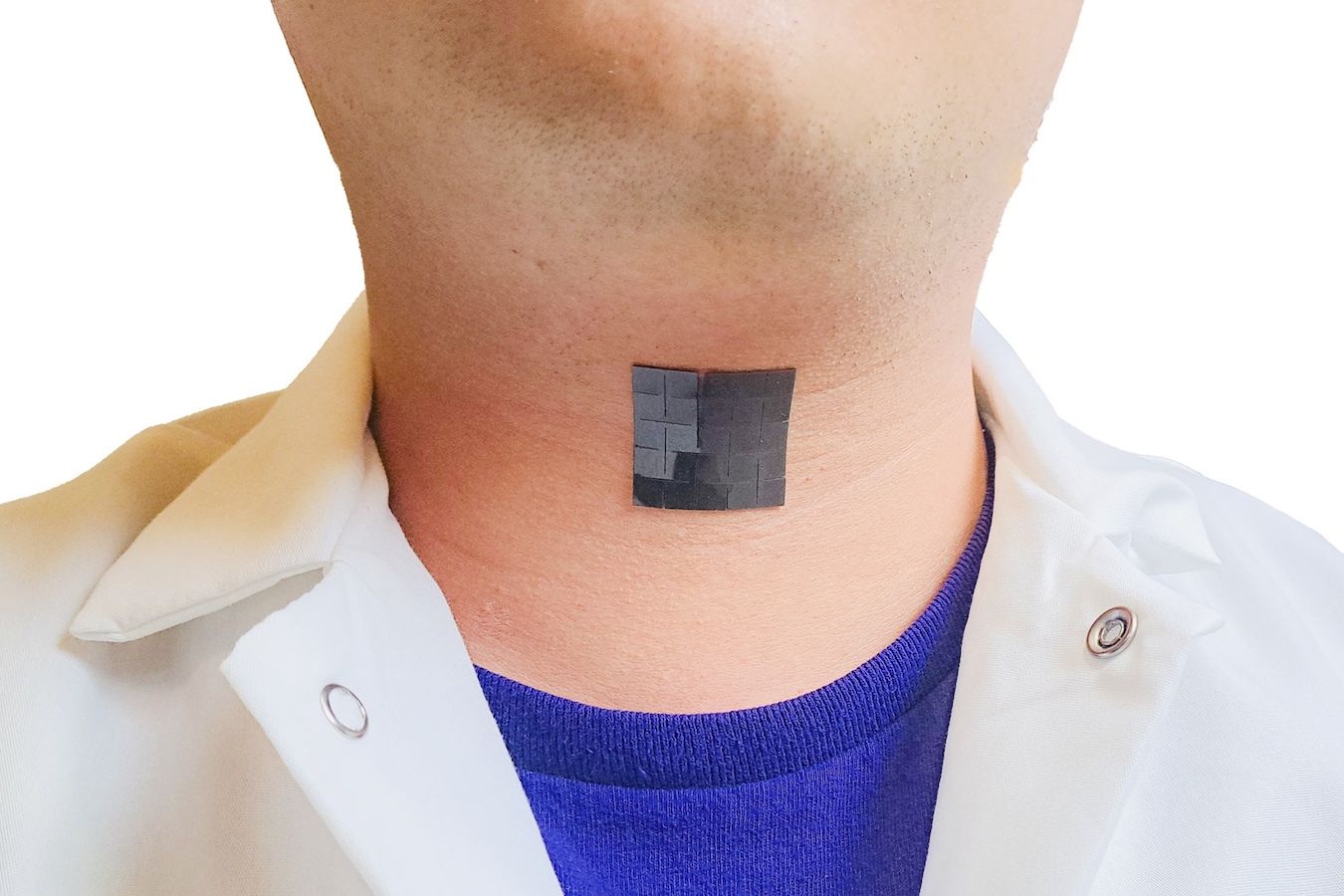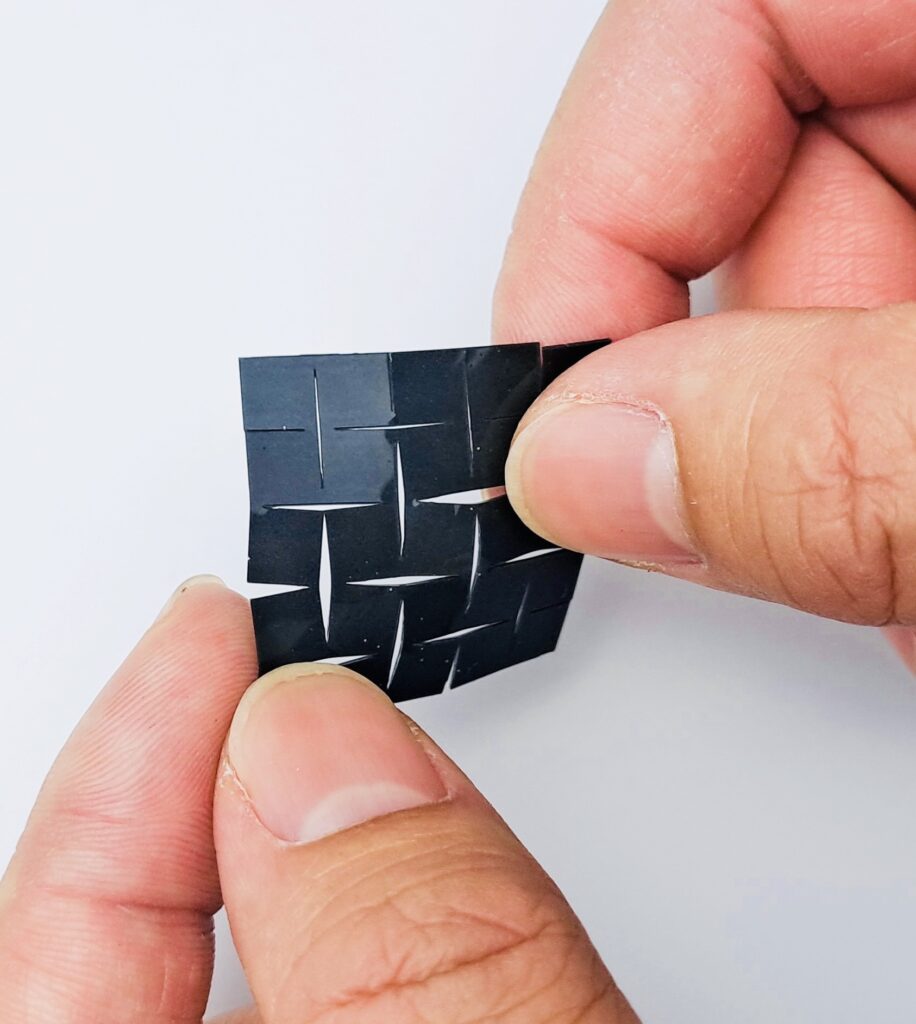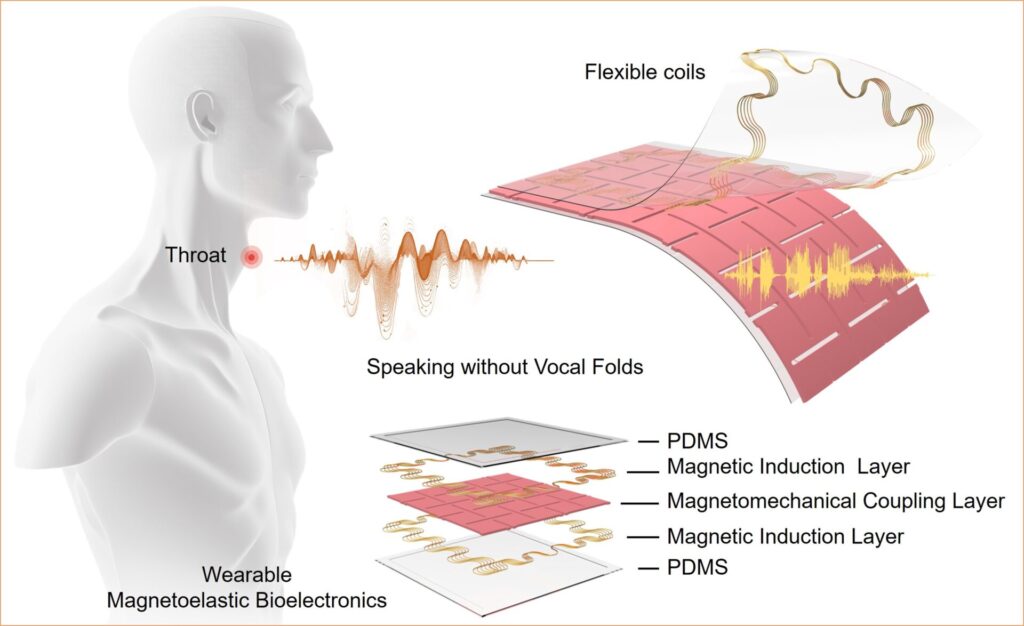
Matthew Calleja
26th March 2024
UCLA’s AI-Assisted Wearable Device Helps Restore Voice
“A voice is a human gift; it should be cherished and used, to utter fully human speech as possible. Powerlessness and silence go together.”
Margaret Atwood – Poet, novelist, teacher.
Atwood’s words illustrate the significance of one’s metaphorical voice in the expression of opinions and the representation of agency. Along this vein, is there a more empowering gesture than reconnecting those deprived of their natural voice with human speech?
In a recent breakthrough from UCLA, bioengineers have developed a slim, adaptable device designed to adhere to the neck. This innovative technology translates the intricate muscle movements of the larynx into discernible speech. Leveraging machine learning algorithms, the device is adept at recognizing the specific muscle movements associated with individual words, further enhancing its efficacy and usability.
Empowering the voiceless

UCLA’s recent invention is a soft, thin, and flexible device, slightly larger than 1 square inch, which can be affixed to the skin near the throat. Its purpose is to assist patients with dysfunctional vocal cords in restoring their voice function.
When it comes to helping the voice-impaired regain some of their normal voice back, “existing solutions such as handheld electro-larynx devices and tracheoesophageal- puncture procedures can be inconvenient, invasive or uncomfortable,” describes UCLA assistant professor Jun Chen.
“This new device presents a wearable, non-invasive option capable of assisting patients in communicating during the period before treatment and during the post-treatment recovery period for voice disorders.”
The adhesive neck patch is UCLA bioengineers’ latest stride in speech technology for patients with disabilities. This self-powered device holds promise as a non-invasive solution for those who have lost their ability to speak due to vocal cord issues.
The magic behind the tech
Dysphonia is a family of voice disorders stemming from diverse, pathological vocal fold conditions or postoperative recovery following laryngeal cancer surgeries. With this novel bioelectric system, it is possible to detect movements in an individual’s laryngeal muscles and convert these signals into audible speech.
The patch-like device comprises two main components.
First, a self-powered sensing component detects and converts signals from muscle movements into electrical signals. These signals are then translated into speech signals using a machine-learning algorithm.
Second, an actuation component transforms these speech signals into the desired voice expression.
In experiments, researchers tested wearable technology on eight healthy adults, gathering data on laryngeal muscle movement. They employed a machine-learning algorithm to link signals to specific words and selected corresponding voice output signals through the device’s actuation component.
The system showed 94.68% accuracy, confirmed by participants pronouncing sentences aloud yet voicelessly, including “Hi, Rachel, how are you doing today?” and “I love you!”
MedTech is about resonating with patients
Voice disorders affect a significant portion of the population, with nearly 30% experiencing them at some point in life. While therapeutic interventions like surgery and voice therapy exist, recovery can be lengthy and invasive, with some requiring extended periods of voice rest post-surgery.
In recent times, there has been a surge in advancements in human language technology, such as synthetic speech creation and speech recognition. However, these innovations focus on analysing, producing, and modifying human texts and speech rather than restoring the patient’s voice.
Concerns also exist regarding the potential misuse of AI voice technology, particularly in generating realistic speech for misinformation and voice phishing attacks, casting doubt on its responsible utilisation for positive purposes.

Sadly, advancements in restoring normal voice function for those with impairments have lagged behind.
Yet, UCLA’s innovative device is a significant step forward in addressing this gap. The way it offers non-invasive assistance for communication during pre- and post-treatment recovery for voice disorders marks significant technological support for those with vocal cord problems.
Looking ahead, the research team plans to expand the device’s vocabulary through machine learning and conduct clinical trials with speech-impaired individuals.
The team making it work
The new bioelectric system was developed by Jun Chen, an assistant professor of bioengineering at the UCLA Samueli School of Engineering, and his colleagues.
Leading the Wearable Bioelectronics Research Group at UCLA, Chen has been recognised as one of the world’s most highly cited researchers for five consecutive years. Collaborators on the project include graduate students from UCLA Samueli, all members of Chen’s lab.
Funding for the research came from various sources, including the National Institutes of Health, the U.S. Office of Naval Research, and the UCLA Samueli School of Engineering.
Connect with MedTech World
Stay ahead with our conference keynotes, panels, and MedTech updates. Bookmark our news page for quick updates, follow us on social media, and subscribe to our YouTube channel for a front-row seat to the future of healthcare technology!
Our upcoming shows:
- Berlin: April 8th
- Barcelona: May 16th
- London: May 29th
- Singapore: August 21st
- Malta (MedTech Malta): November 6th to 8th




